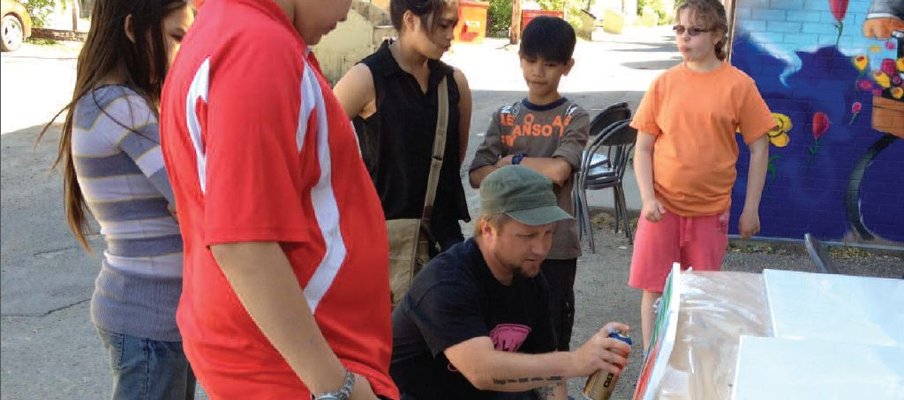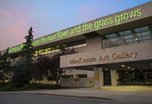Art as a catalyst for cultural connections

Related Programs

Art and creativity can be a powerful tool to bring people together and help them to learn from one another. This concept is something that the MacKenzie Art Gallery (MAG) in Regina has recognized and has been working with for several years. Each year, the MAG leads a program that has been very successful in bridging First Nations, Francophone and newcomer students. Up to this point, the project has involved students from Kahkewistahaw First Nation, École Monseigneur de Laval (a French language school) and ten other community schools.
"It is such a positive program," says Wendy Winter, gallery educator, MAG. "It's so rewarding to watch the students get to know each other and really open up." She adds, "By the second or third visit to the gallery, it's often as if they come without any inhibitions at all and they are really able to have fun."
Students involved in the program have the opportunity to come together at the MAG to tour exhibitions with gallery facilitators and engage in discussion and interactive, collaborative art projects. Workshop leaders are brought on board to work with students to instruct them in many different mediums including creative graffiti, photo transfers and sculpture among other things. The groups of students meet several times a year.
Field trips have often been a component of the program with students travelling from École Monseigneur de Laval to Kahkewistahaw First Nation. For some students, either visiting a First Nation or meeting a Francophone person is a first, and a great opportunity for learning.
"The project helps to bring Aboriginal cultures into schools that may not know a lot about them in a very personal and positive way," says Winter. Students from Kahkewistahaw also have the opportunity to learn about Francophone culture. Winter notes, "It’s about encouraging the students to interact and connect with someone they might not ordinarily have a chance to meet in their everyday school life."
A couple of years ago, Winter began to notice a changing demographic at Laval. "There were a growing number of newcomers whose first language was French. The MAG saw this as another opportunity to bring together multiple cultures in a learning environment. With the addition of a newcomer perspective to the program, the MAG was able to extend its ideas of collaborative learning even further. "It is sometimes easy for newcomers to pick up on and adopt negative stereotypes of Aboriginal people that are unfortunately so prevalent in our society," says Winter. "We hope that through our program, we can play a part in eliminating these misconceptions.”
The culmination, of all of the hard work by students and workshop instructors, is an exhibition of all of the collaborative artwork produced throughout the duration of the program MAG. All of the participants are invited to come together once more for an exhibition reception to celebrate their efforts, connections made and the amazing art that was created along the way. "It is a great opportunity to have a part of the program that is open to the public," says Winter. "When people come into the gallery and see the exhibition, it is an opportunity to see the changes that are happening in our communities from the perspectives of youth from many different backgrounds."



